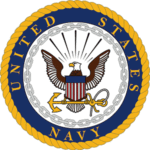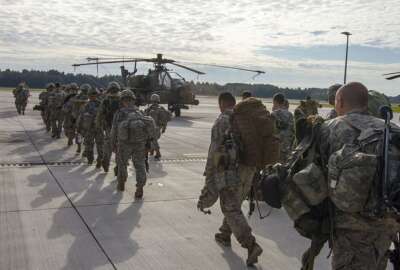
Why are so few troops signing up for one of DoD’s most flexible personnel pilot programs?
The Defense Department and some lawmakers want to make the program, which lets troops take a sabbatical to go back to school or care for a sick loved one, a per...
Best listening experience is on Chrome, Firefox or Safari. Subscribe to Federal Drive’s daily audio interviews on Apple Podcasts or PodcastOne.
As the Defense Department struggles to find talent it needs and scrapes at an ever-shrinking barrel of candidates qualified to serve, the Pentagon is turning to a tool that could make the current workforce stay longer and become better qualified. The Career Intermission Pilot Program is a 9-year attempt to make the personnel system more conducive to today’s workforce.
And now the Defense Department and some lawmakers want to make the program, which lets troops take a sabbatical to go back to school or care for a sick loved one, a permanent fixture in the military.
The Pentagon, and especially the Navy, hope institutionalizing the Career Intermission Pilot Program (CIPP) will help retain troops invested in the military longer by letting some leave to improve their skill sets and return, while at the same time widening the pool of people who may be interested in serving.
But while CIPP is widely available to service members, the number of troops actually signing up and taking advantage of it are less than 10 percent of what Congress allows by law per year.
Despite the anemic participation, some military officials tout the program as a way the military is making service more flexible.
“Navy is a big fan of the career intermission program. In fact, the proposal was initiated by the Navy and we’ve been seeking for the past couple of years to make it a permanent program. We think it’s vital to have alternatives to getting out of the Navy to seek life/work balance,” Vice Adm. Robert Burke, Navy deputy chief of naval operations for manpower, personnel, training and education, told Federal News Radio as part of the special report Taking a break to retain talent in the military.
CIPP lets soldiers, airmen, sailors and marines move from active duty to the reserves for one-to-three years. During that time, participants will not have to meet the same benchmarks in their military career as their active duty peers. In return, the service member must serve two months for every month CIPP is used once he/she returns to active duty.
The Navy changed the name of CIPP to the Career Intermission Program, but it still functions legally as a pilot program.
Anthony Kurta, then performing the duties of undersecretary of defense for personnel and readiness, told Federal News Radio in November he supported institutionalizing the program.
“We believe that after eight years of experience, lessons learned, feedback from participants, and observation of retention behavior, changing the current statutory authority from a pilot program to a permanent authority is warranted,” he said. “Permanent authority will institutionalize this program as an innovating and modern force management and retention tool in the talent management toolkits of the services.”
In February, DoD acknowledged CIPP is a “well-received program across the services and a more permanent version is still in consideration,” said Air Force Maj. Carla Gleason, a Pentagon spokeswoman.
Military officials constantly tout CIPP as a way the military is becoming more flexible to retain talent.
Rep. Jim Banks (R-Ind.) thinks so highly of the program that he introduced a bill to take CIPP out of its pilot status.
“Encouraging our men and women in uniform to continue their service while maintaining a healthy work-life balance will help to create a more well-rounded military,” Banks said in a statement. “As we look for new and innovative ways to boost the recruitment and retention of our armed forces, preserving the highly successful Career Intermission Program will offer our dedicated soldiers, sailors, pilots and marines the opportunity to pursue career paths they couldn’t explore otherwise.”
The current program is set to expire in December 2019.
But as much as the services hold CIPP up as a role model for military flexibility, it’s being sparsely utilized.
From 2009 to 2015, the military services could put a maximum of 160 troops in the CIPP program per year.
But the services never got anywhere close to that number. Between 2009 and 2016, a period when up to 1,280 troops could have participated in CIPP, only 192 actually did.
So, if both Congress and DoD officials are so supportive of CIPP, then why is the participation rate so low?
The benefits
The military functions on a rigid “up or out” promotion system established by the 1980 Defense Officer Management Personnel Act (DOPMA). Usually, a service member will have a certain amount of time in each rank before he or she faces a promotion board. Service members have two chances for a promotion board to recommend them for the next rank or they will be separated from the military. Promotion boards judge candidates on the required benchmarks they’ve completed and their reviews from commanding officers.
But what if a service member needs to care for a sick relative, or wants to get a Master’s degree to improve the work he or she can do for the military? The up or out system doesn’t allow for that flexibility and may cause the member to leave the military early or separate from the service.
| Name and Rank | Service | Used CIPP for: | After CIPP |
| Boatswain’s Mate Megan Miller |  |
Full-time nursing student at Tidewater Community College. Had to disenroll from nursing program due to time constraints. | Continuing Navy career |
| Lt. Latoya Small |  |
Completed doctoral coursework at Chestnut Hill College in Philadelphia. Spent time with ailing grandmother. | Clinical psychology resident at Walter Reed National Medical Center |
| Lt. Cmdr. Suzanne Hopkins |  |
Took care of newborn and moved with her husband in the Marine Corps to his new station in North Carolina. | Manning officer for Littoral Combat Ship Squadron 1 |
| Lt. Eric Bray |  |
Took care of daughter after brain resection surgery. Completed third Master’s degree and started a small business. | Communications officer at Littoral Combat Ship Squadron 1 |
| Lt. Col. Jennifer Gurganus | Currently works as an Air Force maintenance officer. Approved for CIPP and will spend time with mother who is in poor health. | To be determined |
CIPP lets troops take a break in their service without DoD penalizing them via promotion boards. The program gives troops health care and a small monthly stipend for reserve work on the weekend while service members are on sabbatical.
Navy Lt. LaToya Small is one of the sailors who took advantage of CIPP.
Small was a second class petty officer working as a hospital corpsman at Portsmouth Naval Hospital in Norfolk, Virginia.
In August 2012, Small started coursework for a doctorate in clinical psychology at Chestnut Hill College in Philadelphia, Pennsylvania.
“I had a great chain of command. They allowed me to have a flexible schedule where I worked a 40 hour work week, but I worked Monday, Thursday Friday and Saturday [in Norfolk] and went to school on Tuesday and Wednesday full time in Philadelphia,” Small told Federal News Radio. “I was doing a lot of commuting.”
Life wasn’t easy.
“It was a challenge. I lived by my calendar. I had to schedule personal time if it wasn’t school or work. I think I allowed myself on Friday evenings to have a little bit of time,” Small said. “As far as social life for a relationship I’d say it was a little challenging. I had a very supportive mate. We had this understanding that this is what I’m working toward. My time will be very limited. … So we scheduled date night. If you weren’t on my calendar then I didn’t see you. There was no impromptu anything.”
On top of work and school, she was the vice president of the Corpsman Ball Committee, organizing a 600-person event and various fundraisers.
In August 2013, the Navy accepted Small into the CIPP program, letting her go to school full time.
CIPP “gives you that ease of knowing ‘I can really just focus on my schoolwork and not have to worry about anything other than being a student and getting good grades,’” Small said.
At the time of her intermission, Small’s grandmother also was sick and getting progressively worse. She lived with her grandmother so she could be a full-time caregiver.
“She passed away right before I came back into the military. Without [CIPP], I wouldn’t have had the opportunity to be at her bedside to care for her until literally her dying day. I feel like this program not only afforded me a professionally awesome and amazing opportunity, but it gave me something that I will probably cherish for the rest of my life. Being in the military takes you away from your family; this program gave my family back to me and gave me back to someone who meant the world to me,” Small said. “That’s an experience I wouldn’t trade for anything in the world.”
Small returned to service in July 2016 and the Navy commissioned her as an officer. She’s a clinical psychology resident now and still has to take a licensing exam to become a full psychologist. She provides diagnostic clarity and individual psychotherapy for service members who have experienced trauma.
“I’m doing exactly what I wanted to do. I get to work with service members helping them restore their mental health to come back to a place of well-being. I have more leadership responsibility,” Small said.
The Issues
As much as the program helped Small, many observers would think troops would be clamoring to join a program that can advance their career or give them more time with a sick loved one.
But the numbers don’t reflect that, and CIPP stories aren’t always as successful.
It’s worth noting Congress allowed only 160 service members to join the program per year until 2015. Lawmakers expanded the program to 1,600 a year, or 400 in each branch.
The Navy has the highest CIPP rates, but between 2009 and 2015 the most sailors participating in the program in a single year was 22 in 2014.
After the congressional expansion, 20 sailors used the program in 2016 and 36 in 2017. As of February 2018, only three sailors applied to the program.
The Army started its CIPP program in 2014. Since then only 42 soldiers applied to the program and the Army approved only 23.
The Air Force had a total of 86 airmen join since it started using the CIPP program over the past three years.
Even though Congress gave the military services the ability to fill 400 spots each per year, the services are unable to hit even 10 percent of that.
When the limit was 40, the military services, in some cases, provided as few as six troops a year for the program.
The lack of use caused the Government Accountability Office to wonder in 2015 if the program had been studied enough when Congress considered expanding the program to 1,600 troops a year.
“Service officials stated that factors affecting participation include statutory requirements, such as eligibility criteria and military culture, among others,” the study states. “Neither DoD nor the services have developed a plan for evaluating the pilot program. GAO has reported that a pilot program should have a well-developed and documented evaluation plan, including key features such as well-defined, clear and measurable objectives and standards for determining pilot-program performance.”
GAO states the basis for the then-proposed expansion of the pilot was unclear without a well-developed plan for evaluating the pilot, and there is limited information to make decisions on the future of CIPP.
Burke said there are multiple reasons for the dismal numbers.
“There are a number of factors I think have dissuaded people from really jumping in in large numbers. During the early years of the program, there were limits on the number of people who could apply and it started at very small numbers,” Burke said. “It’s up to about 400 per service per year in its current form and we’re not getting anywhere near that number of applicants so it’s effectively not a limiting factor, the number of quotas available.”
Burke said there’s a common misconception among sailors and other troops that there would be a post-intermission promotion impact.
Burke said that’s simply not that case and most sailors that return go on to promote to the next rank.
While promotion boards are not supposed to take things like CIPP into account, there is no guarantee a member on the board might not be biased against someone who entered the program.
Outside of the guidance given to promotion boards, other factors that decide an officer’s future are mostly subjective and what the boards prioritize seems to be different than what leadership does, said David Barno, a senior fellow at the Atlantic Council and retired Army lieutenant general who works extensively on personnel issues.
Promotion boards “are told to pick people with promotion potential, these are going to be the future leaders. … We want people with diverse backgrounds, that have had a variety of assignments, that have had broadening experiences. … The guidance is to find people with a broader portfolio,” Barno said.
Today, for instance, a board might be presented with one soldier with four tours in a combat zone, followed by another with just one tour but had spent several years at the Naval Academy or in grad school.
“I think there’s going to be a very strong propensity to pick people with operational experience,” he said. “In a sense [it’s] to reward them for their duties in the last 10 years and maybe a not so subtle bias against those who may be viewed as not pulling their full weight because they weren’t there for that whole time.”
The 2015 GAO report reinforced that idea.
“Service members have the perception that a break in service may have a negative effect on upward advancement. Specifically, officials from all the services stated that service members may not trust assurances as to how a break in service would be viewed by promotion boards,” the report stated. “One participant was concerned that ‘a break in service would be viewed as taking an off-ramp, an easy path, taking [oneself] out of the fast lane,’ but upon returning from sabbatical has been reassured by knowledge of other participants who have returned from their sabbaticals and received promotions.”
Burke said another factor keeping troops out of CIPP is money.
“You go into the inactive ready reserve and you get a small fraction of your paycheck. You keep your medical and dental benefits, you get a funded move to the location that you’re taking the intermission … you get commissary and exchange privileges, but you’re going to get roughly 5 percent of your base pay for that time. So if you don’t have a means of providing for yourself, if you’re not married and have a spouse that can provide for you or you haven’t been in long enough to have a GI bill that can pay for the housing allowance … that becomes cost prohibitive to live on that small of a salary,” Burke said.
Of course there’s always the possibility that the intermission program won’t work out.
Boatswain’s Mate 1st Class Megan Miller left active duty in 2011 to pursue a nursing degree and returned to duty in 2014.
Latest Defense News
She studied at Tidewater Community College in Norfolk, Virginia, and then at Norfolk State University.
Miller ended up disenrolling from the nursing program because of time constraints.
“When I started the sabbatical I did not have enough prerequisites to actually be accepted into the program. So, my first year was literally just doing prerequisites at Tidewater Community College,” Miller told Federal News Radio.
Miller went into the fast-track nursing program after finishing her prerequisites, but wasn’t able to finish the program before returning back to the military.
“I still have two full semesters I’d have to finish in order to get my degree. My entire nursing class, it was 100 percent graduation rate except for myself,” she said.
Since returning, Miller has been on two deployments and has been unable to continue her studies.
“I know how difficult those classes were and how much effort and time. I literally would spend hours upon hours with study groups at the library,” Miller said.
Outside of not having enough time to finish a goal, publicity behind CIPP has been lackluster. All of the participants in the program who talked to Federal News Radio said they were barely aware of the program before applying; most of the time they stumbled onto the information.
But, despite the low numbers and poor marketing, CIPP has symbolic significance when it comes to DoD recognizing it needs to change the way it approaches talent management.
Make sure to read the second part of the special report Taking a break to retain talent in the military, in which Federal News Radio looks at why DoD thinks the CIPP program can help.
Copyright © 2024 Federal News Network. All rights reserved. This website is not intended for users located within the European Economic Area.
Scott Maucione is a defense reporter for Federal News Network and reports on human capital, workforce and the Defense Department at-large.
Follow @smaucioneWFED






